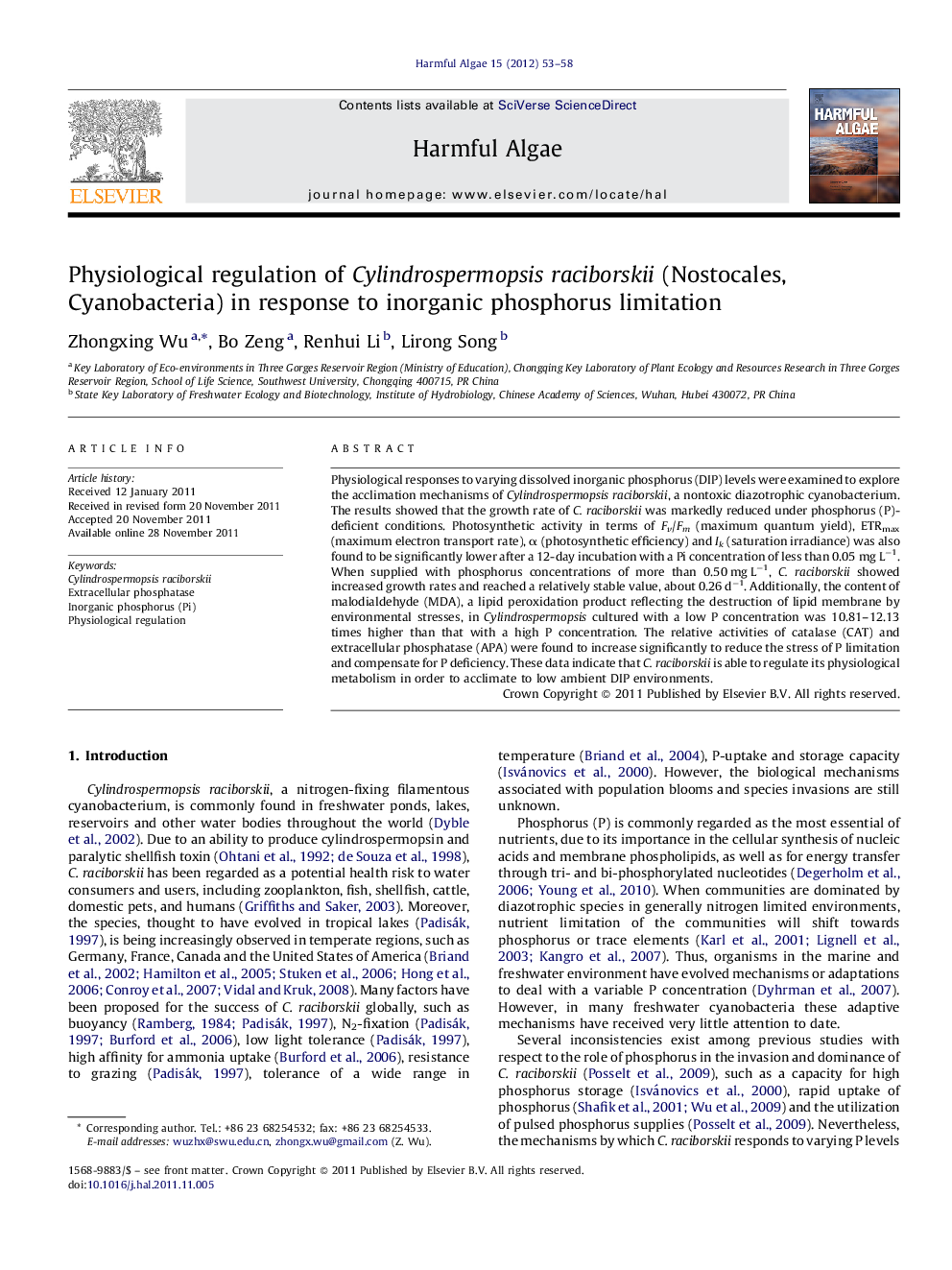| Article ID | Journal | Published Year | Pages | File Type |
|---|---|---|---|---|
| 4545566 | Harmful Algae | 2012 | 6 Pages |
Physiological responses to varying dissolved inorganic phosphorus (DIP) levels were examined to explore the acclimation mechanisms of Cylindrospermopsis raciborskii, a nontoxic diazotrophic cyanobacterium. The results showed that the growth rate of C. raciborskii was markedly reduced under phosphorus (P)-deficient conditions. Photosynthetic activity in terms of Fv/Fm (maximum quantum yield), ETRmax (maximum electron transport rate), α (photosynthetic efficiency) and Ik (saturation irradiance) was also found to be significantly lower after a 12-day incubation with a Pi concentration of less than 0.05 mg L−1. When supplied with phosphorus concentrations of more than 0.50 mg L−1, C. raciborskii showed increased growth rates and reached a relatively stable value, about 0.26 d−1. Additionally, the content of malodialdehyde (MDA), a lipid peroxidation product reflecting the destruction of lipid membrane by environmental stresses, in Cylindrospermopsis cultured with a low P concentration was 10.81–12.13 times higher than that with a high P concentration. The relative activities of catalase (CAT) and extracellular phosphatase (APA) were found to increase significantly to reduce the stress of P limitation and compensate for P deficiency. These data indicate that C. raciborskii is able to regulate its physiological metabolism in order to acclimate to low ambient DIP environments.
► Growth and photosynthesis of C. raciborskii are markedly inhibited under P-deficient conditions. ► The malodialdehyde (MDA) content increases at low P concentrations. ► The activities of CAT and APA show significant increases at low P concentrations. ► C. raciborskii could regulate its physiological metabolism to acclimatize to Pi conditions.
